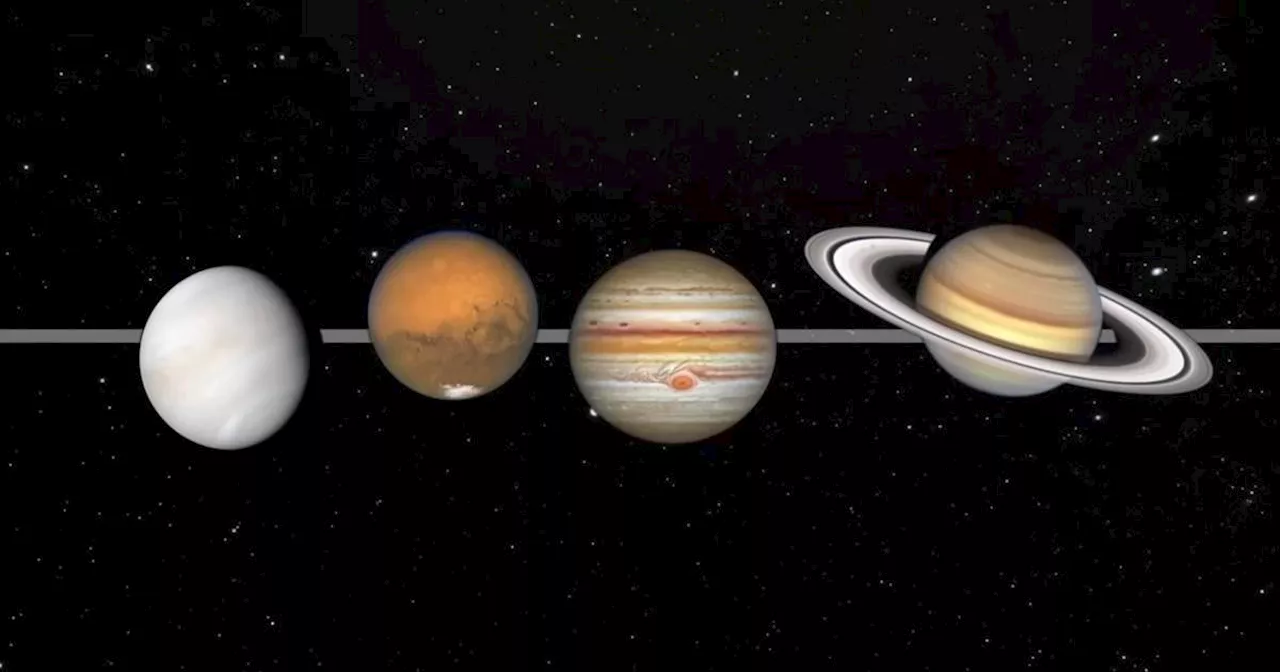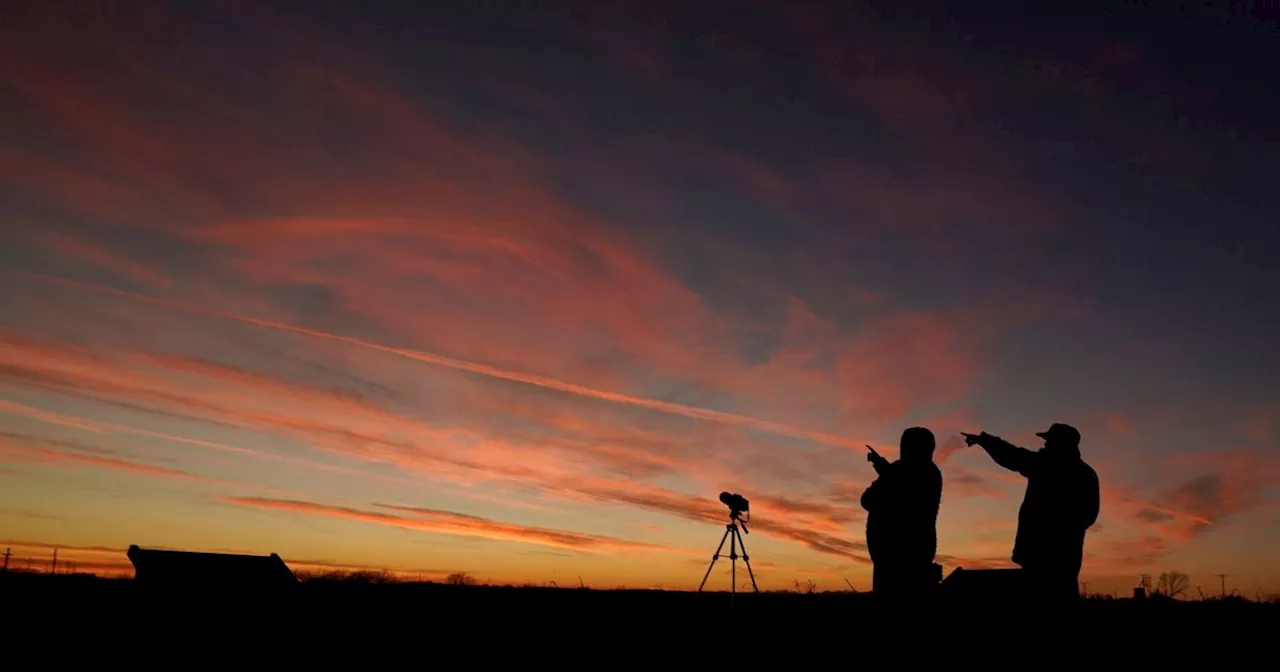A once-in-a-lifetime celestial event unfolded last night, with six planets aligning across the night sky for the first time in a century. This rare phenomenon, known as a 'planetary alignment' or 'planetary parade,' features Mars, Jupiter, Venus, Saturn, Uranus, and Neptune in a stunning display. While four planets are visible to the naked eye, Neptune and Uranus require a telescope. Join us as we guide you on how to witness this incredible event and explore its rarity.
After the January Wolf Moon, we've already embarked on the year with some remarkable celestial events. However, last night presented a truly extraordinary sight: six planets aligned across the night sky for the first time in a century. These celestial bodies, Mars , Jupiter, Venus , Saturn , Uranus , and Neptune , will remain visible throughout January and into February. This phenomenon, known as a 'planetary alignment' or 'planetary parade,' is exceptionally rare.
While four planets (Mars, Jupiter, Venus, and Saturn) are visible to the naked eye, Neptune and Uranus require a telescope for observation, according to BBC Weather. Adding to the spectacle, the Moon is expected to join the parade, appearing in alignment with the six other celestial bodies over the next few nights. But how can you witness this once-in-a-lifetime event? Here's a guide to help you:To locate these celestial wonders, several resources are available beyond simply looking up. Download SkyView Lite, a free augmented reality app that overlays the positions of planets, constellations, and other celestial objects through your phone camera. Alternatively, utilize timeanddate.com to determine which planets will be visible in your precise location.Mars, the most eastward planet in the line, will stand out as exceptionally bright. It will be high and prominent, positioned to the left of Jupiter, near the Gemini constellation in the East, reported MyLondon. Following Mars, Jupiter will be visible above the iconic constellation Orion, high in the sky. Venus will be slightly lower, while Saturn will be positioned in the southwest. For those with a telescope, Uranus and Neptune will also be visible in the parade. The rarity of six planets aligning in the sky is truly extraordinary, occurring only about once every 100 years, according to Star Date. It's estimated that for all eight planets to align within a 1-degree radius, it would take an unimaginable 13.4 trillion years, as stated by How Stuff Works. Considering the universe's estimated age of 13.8 billion years, this celestial alignment would be incredibly rare.Weather conditions significantly influence viewing opportunities. The planets will remain in a similar position throughout early February, offering multiple chances to witness the planetary parade. Clear nights with minimal cloud cover are ideal for observation, and it's recommended to stargaze in locations with minimal light pollution. Remember to check the weather forecast before attempting to capture this remarkable celestial event.
PLANETARY ALIGNMENT CELESTIAL EVENT ASTRONOMY MARS JUPITER VENUS SATURN URANUS NEPTUNE SKYGAZING
United Kingdom Latest News, United Kingdom Headlines
Similar News:You can also read news stories similar to this one that we have collected from other news sources.
 Planetary Parade: Six Planets Align in January 2025Get ready for a celestial spectacle! Six planets, including Venus and Saturn in a rare conjunction, will align in the evening sky in January 2025, offering a breathtaking sight for stargazers.
Planetary Parade: Six Planets Align in January 2025Get ready for a celestial spectacle! Six planets, including Venus and Saturn in a rare conjunction, will align in the evening sky in January 2025, offering a breathtaking sight for stargazers.
Read more »
 Six Planets Align in a Spectacular Celestial ParadeA rare celestial event will see six planets visible in the night sky throughout January, with the best viewing opportunity tonight, January 21st. Venus, Saturn, Jupiter, and Mars will be visible to the naked eye, while Uranus and Neptune can be seen with a telescope. The Met Office predicts clear skies in the north and west will offer the best viewing experience, while those in the southeast might encounter patchy cloud cover.
Six Planets Align in a Spectacular Celestial ParadeA rare celestial event will see six planets visible in the night sky throughout January, with the best viewing opportunity tonight, January 21st. Venus, Saturn, Jupiter, and Mars will be visible to the naked eye, while Uranus and Neptune can be seen with a telescope. The Met Office predicts clear skies in the north and west will offer the best viewing experience, while those in the southeast might encounter patchy cloud cover.
Read more »
 how to see six planets in the night sky in JanuaryMars, Jupiter, Venus, Saturn, Uranus and Neptune are visible this month in a 'planetary parade'. Dr Becky Smethurst at the University of Oxford explains what to look out for
how to see six planets in the night sky in JanuaryMars, Jupiter, Venus, Saturn, Uranus and Neptune are visible this month in a 'planetary parade'. Dr Becky Smethurst at the University of Oxford explains what to look out for
Read more »
 Rare 'Planetary Parade' Lights Up Night SkyStargazers can witness a rare celestial event this week as six planets align in the night sky. This spectacular planetary parade offers a chance to see Mars, Jupiter, Uranus, and Saturn with the naked eye, while a telescope will reveal Uranus and Neptune. Experts say this alignment happens infrequently, making it a must-see for astronomy enthusiasts.
Rare 'Planetary Parade' Lights Up Night SkyStargazers can witness a rare celestial event this week as six planets align in the night sky. This spectacular planetary parade offers a chance to see Mars, Jupiter, Uranus, and Saturn with the naked eye, while a telescope will reveal Uranus and Neptune. Experts say this alignment happens infrequently, making it a must-see for astronomy enthusiasts.
Read more »
 What is January's ‘parade of planets,' and what does it mean for your sign?An alignment of six planets will dazzle in January 2025.
What is January's ‘parade of planets,' and what does it mean for your sign?An alignment of six planets will dazzle in January 2025.
Read more »
 Witness a Spectacular Planetary Alignment in FebruaryAn extraordinary planetary alignment will grace the night sky throughout February, offering stargazers a rare celestial spectacle. Mars, Jupiter, Uranus, Neptune, Saturn, and Venus will converge after sunset, creating a stunning visual display. While alignments of this magnitude aren't uncommon, they don't occur annually. For optimal viewing, look south about an hour and a half after sunset. While four planets will be visible to the naked eye, binoculars or a telescope will be needed to spot Saturn and Neptune.
Witness a Spectacular Planetary Alignment in FebruaryAn extraordinary planetary alignment will grace the night sky throughout February, offering stargazers a rare celestial spectacle. Mars, Jupiter, Uranus, Neptune, Saturn, and Venus will converge after sunset, creating a stunning visual display. While alignments of this magnitude aren't uncommon, they don't occur annually. For optimal viewing, look south about an hour and a half after sunset. While four planets will be visible to the naked eye, binoculars or a telescope will be needed to spot Saturn and Neptune.
Read more »
